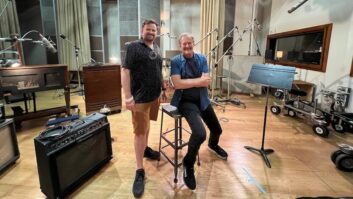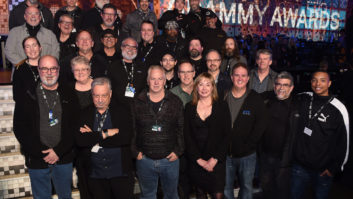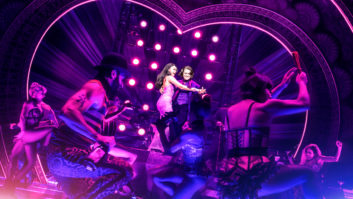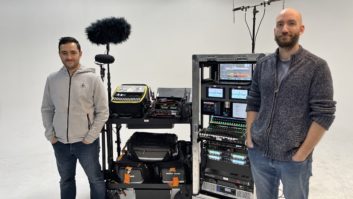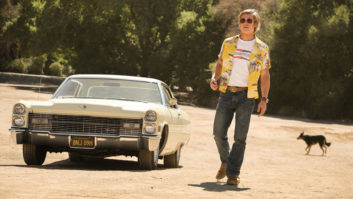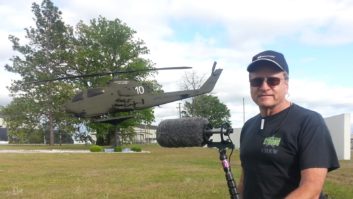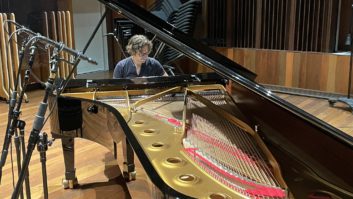The new Netflix film, Passing, director Rebecca Hall’s intimate, black-and-white portrait of friendship and identity, transports audiences back to New York City of the late 1920s, to a time of jazz clubs, Prohibition and racial segregation.

In Passing, two childhood friends who reunite after a chance meeting in a swanky hotel café. Irene, a woman of color, hides beneath her large hat brim, trying to keep a low profile and escape the summer heat while seated at a table indoors. In walks Clare, also a woman of color, who is “passing” as a white woman. She boldly strides into the room, eventually notices Irene, and joins her at her table before heading up to Clare’s suite, where they can talk openly about racial identification, social status and their divergent paths.
Passing premiered at the 2021 Sundance Film Festival in US Dramatic Competition, but filming started back in November 2019 before Covid shut down New York City (and film production).
The film was shot on-location in Brooklyn Heights and Harlem, where production sound mixer Paddy Hanlon’s biggest technical challenge was keeping the pervasive sounds of the modern city from infiltrating his recordings. At the same time, he felt frustrated by not being able to record the city.
“When I go out on a movie, I’ll get all the dialog, but I’ll also capture ambient sounds of the avenues or streets we’re close to so they can create a bed in post,” he says. “With this one, I was a little bit disgruntled because I couldn’t do that. It was the opposite; I had to keep the city out.”
Fortunately, the large-brimmed hats worn by the actors afforded an enclosed space where Hanlon could stash radio mics—in this case, unobtrusive Countryman B6 lavaliers. “Any time we shot outside, my first question was, ‘Are they wearing hats?’” he says. “The hat brim in combination with the B6 was an effective way to shut out the city. It gave really good signal-to-noise ratio. That saved us a lot on the streets.”
A building on Malcolm X Blvd., which runs right through the heart of Harlem, proved to be a particularly challenging location that is key to the film—for the scene at the end where Irene, Clare and Brian (Irene’s husband) attend a big party at a walk-up apartment on the top floor. The sequence starts outside in a quiet, wintery courtyard with the building looming over the trio. Their shoes crunch in the snow as they head toward the lobby.
“That was a noisy area,” Hanlon recalls. “It was an enclosed group of buildings with a huge iron gate at the entrance, and beyond that gate was a very busy avenue—like Broadway. The grips were a great help here; we covered the whole gate with sound blankets. It didn’t block the noise completely, but I was trying to get the city to dissolve into more of a rumble rather than discernible sounds.”
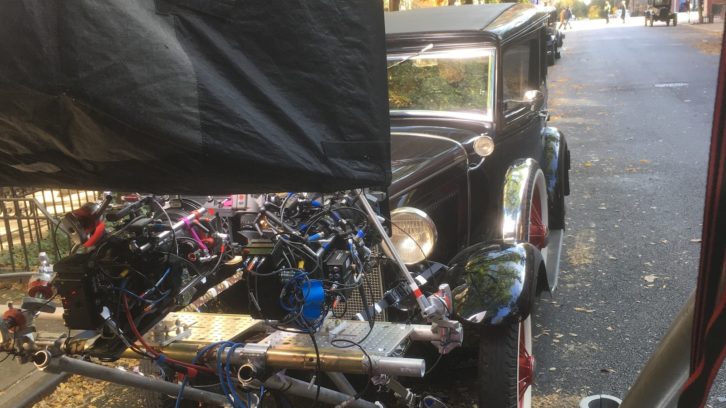
CAPTURING THE PERFORMANCE
Passing is a dialog-driven film, as the actors packed tremendous amounts of meaning into the subtle delivery of their lines. Hanlon’s approach to muffling the modern city sounds allowed dialog editor Branka Mrkic to filter out or significantly reduce the remaining rumble in post using iZotope RX, while still maintaining the quality and integrity of the on-set performances.
Another challenging scene for production sound was with Irene and Brian driving home in a 1920s-era car. Hanlon placed a small Schoeps MK41 near the window to record Irene’s lines before she got into the car; both actors were also wearing Sanken COS-11 lav mics paired with Lectrosonics transmitters and receivers.
In the scene, Brian moved over to let Irene drive—climbing past the shockmount-secured Sennheiser MKH 50 shotgun mic that Hanlon clamped between the seats to capture both Brian’s and Irene’s lines. The car was, of course, being safely towed by a process trailer, on which Hanlon was riding while monitoring the tracks on his customized PortaBrace Wheeled Audio Cart Hard Case. It has a rack that houses a Lectrosonics Venue 2 modular receiver, a Sound Devices 788T recorder and a Sound Devices CL-9 mixer.
“The engine on the process trailer was so loud, it was like sitting next to a generator,” Hanlon says. “I listened to all the mics and they sounded fine in their own ways, but the MKH-50 really saved us inside the car.”
During a street scene in which Irene and her friend Felise encountered Clare’s white husband John, wind machines were used to create a gusty December day, and filming took place near the Brooklyn Bridge. These two difficult conditions made capturing usable production sound questionable.
“The wind was blowing in the actors’ faces, so it was blowing out a bit on the radio mics, and there was no point in having the boom over the top as it would get blown out, too.” he says. “So we were just getting a guide track, essentially.”
To add some flavor, Hanlon sent boom operator Richard Baldomero down the street to record kids on a nearby playground in case their ambient voices were needed to layer under dialog edits. For this, Baldomero used a Schoeps MiniCMIT shotgun mic and Hanlon’s mobile recording bag equipped with a Sound Devices 633 mixer/recorder, three Lectrosonics 411a receivers, and three Lectrosonics SRb receivers. While Baldomero recorded the children playing, Hanlon ended up getting clean dialog on the turnaround takes.
Although Hanlon worried that the windy street dialog might be marred by buffeting wind, supervising sound editor/re-recording mixer Jacob Ribicoff—at Harbor Picture Company in New York City—said the tracks sounded quite good.
“Paddy [Hanlon] did an amazing job, because when it came to me, there was no wind distortion; we had clean recordings of the voices,” says Ribicoff, who has won Emmy and MPSE Golden Reel Awards for sound editing. “Visually, you could see the wind blowing around the actors, but you couldn’t hear it at all. It was my job to make it sound windy, to create all of that. ”
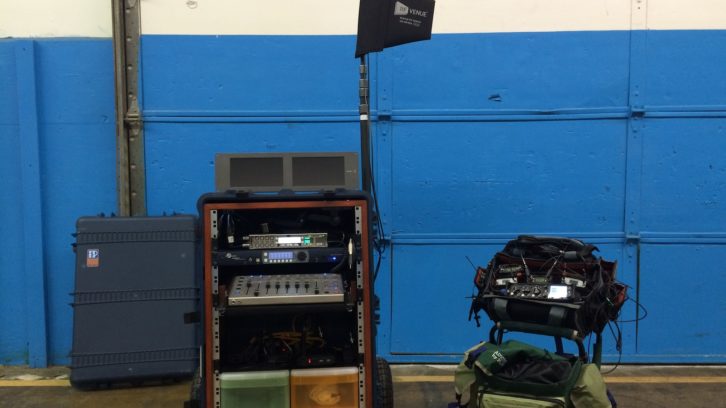
ATMOS MIXING AT HARBOR
There were actually two mixes for the film. Ribicoff completed the initial 5.1 mix at PostWorks NY in August, 2020. Then Passing was chosen for the Dolby Institute Fellowship just before its Sundance premiere, allowing for a final Atmos mix in Harbor Picture Company’s Studio A, which is equipped for theatrical Atmos, near-field Atmos, 7.1, and 5.1 surround mixing. It features an Avid S5 console with JBL speakers throughout.
“The film was posted to Frame.io that fall, and I was able to watch it again after not hearing the mix for a while,” Ribicoff recalls. “Immediately, there were changes I wanted to make. Then in late November, we got word of the Dolby grant, so we had a chance to do more mixing. It’s funny, because I was thinking of possibly mixing the film in mono since it’s black and white, much like the approach on Mank. But when we got the grant to mix in Atmos, that sealed the decision to not mix in mono.”
Finding the Score of ‘The Lost Daughter’
The additional Atmos channels were useful for building up the world beyond the screen. For instance, the height channels helped to add dimension to the townhouse in Harlem where Irene’s family lived. “The kids are playing upstairs, and we were able to have them stomping around, literally over your head,” says Ribicoff. “Also, the 7.1.2 beds are nice for spreading out the ambience and music.”
Ribicoff makes the most of this during the final party scene. Guests are walking around, as well as sitting and chatting. Their voices fill the space and pan with the action. There’s diegetic music coming from the corner of the room, but there’s also a license track over top —a piano piece by Emahoy Tsegue Maryam Guebrou called “The Homeless Wanderer.” The party music clashes with the licensed track, creating a tense vibe in this otherwise buoyant atmosphere; it’s reflective of Irene’s mood.
“This was one of several instances where Rebecca was adamant on combining layers that you wouldn’t often have going at the same time,” Ribicoff says. “It was tricky to have all those coexist in a way that made sense. Atmos helped with that, to give space to these layers of competing sounds.”
Atmos was also helpful for creating the feeling of a bustling New York City of the 1920s. There is no wide, sweeping shot of the city in the opening sequence. Instead, director Hall simply filmed the feet of two women walking down the street into a toy store. Ribicoff then created the world through sound, filling the surrounding space with vintage horn honks and engines for cars passing by, sidewalk chatter, Foley footsteps for pedestrians in 1920s footwear (courtesy of foley artist Marko Costanzo and foley mixer George Lara) and era-appropriate construction sounds.
He says, “I did some research into construction tools of the time and discovered the power drill had started to be used around then. I put an old-sounding power drill way in the background. There were elevated subway trains and old telephones. I had a lot of good recordings of that period—even traffic beds—that I was able to lean on throughout the movie, enough so that the audience always feels that toehold on the period.”
Ribicoff certainly appreciated and touted the benefits of being able to revisit a final mix. “Having the opportunity to come back to the mix, and being able to mix it in Harbor’s Studio A, a beautiful-sounding Atmos stage, I felt as if I was getting into another level of hearing, and that helped with the Foley and with the voices themselves; it was helpful in so many ways.”
